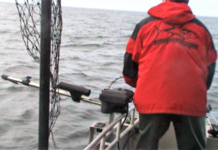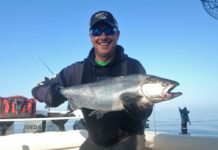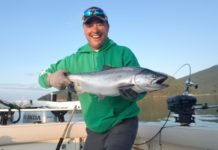
The New England seamounts make up the longest seamount chain in the North Atlantic, forming a southeast trending chain of underwater peaks running from Bear Seamount for another 700 miles to Nashville Seamount. This image shows Bear Seamount with Physalia Seamount in the background. About 200 miles from Woods Hole, MA, flat-topped Bear Seamount rises approximately 2,000 meters from the surrounding ocean floor to a depth of 1,100 meters.
Seamounts are often remnants of extinct volcanoes and come in a variety of shapes and sizes. The technical definition of a seamount states that it should rise over 3,280 feet (1,000 meters) above the surrounding seafloor. Because they never break the water surface, seamounts are not islands.
Seamounts can be found in every world ocean basin and scientists estimate that there are more than 100,000 seamounts around the globe. Over 30,000 of those are found in the Pacific Ocean alone. Despite their abundance, remarkably, less than one-tenth of a percent of the seamounts in the world have been explored.
Studies conducted over seamounts indicate that seamounts function as “oases of life,” with higher species diversity and biomass found on the seamount and in the waters around it than on the seafloor.
Seamounts rise up high in the water column, creating complex current patterns influencing what lives on and above them. Seamounts also provide substrate (a location for attachment) where organisms can settle and grow. These organisms provide a food source for other animals. Scientists have found that seamounts often provide habitat to endemic species, or species found only in a single location.
For More Information:
Davidson Seamount: Exploring Ancient Coral Gardens
North Atlantic Stepping Stones 2005
Geology of Davidson Seamount, Davidson Seamount 2002
Sign up for the Ocean Explorer E-mail Update List.














